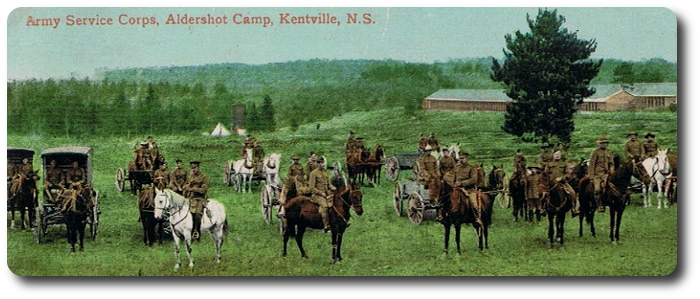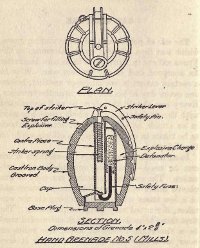Topic: Medals

Medals; QRO 1859
The Queen's Regulations and Orders for the Army, Horse-Guards, 1st December, 1859
Medal with Annuity.
 1. A silver medal and an annuity are granted, as a reward for "distinguished or meritorious service," to Serjeants, either while serving, or after discharge, (such discharge not being anterior to the 19th December 1845,) with or without pension, and which may be held during service, and together with pension; the annuity is not liable to forfeiture except by sentence of court-martial, or by conviction of felony by a court of Civil Judicature. The name of the Serjeant, the number of his regiment, and the date of grant, are to be engraved on the side of the medal, which also bears the words "For meritorious Service."
1. A silver medal and an annuity are granted, as a reward for "distinguished or meritorious service," to Serjeants, either while serving, or after discharge, (such discharge not being anterior to the 19th December 1845,) with or without pension, and which may be held during service, and together with pension; the annuity is not liable to forfeiture except by sentence of court-martial, or by conviction of felony by a court of Civil Judicature. The name of the Serjeant, the number of his regiment, and the date of grant, are to be engraved on the side of the medal, which also bears the words "For meritorious Service."
2. Commanding officers of regiments are to address their recommendations for this honorable distinction to the Military Secretary, transmitting at the same time descriptive returns and records of services of the Serjeants they select.
Medal with Gratuity.
3. A silver medal and a gratuity are granted, under the provisions of the Royal Warrants, to non-commissioned officers and soldiers for "Long service and good conduct;" the rank and name, and the date of grant, will be engraved on the medal at the public expense. A medal and gratuity were also, during the Crimean War, granted for Distinguished Conduct in the Field.
4. On all occasions in which commanding officers of regiments recommend soldiers for the Medal and Gratuity for Good Conduct,—which should be done as soon as practicable after the completion of the required term of service, viz., in the artillery, engineers, and infantry, eighteen years, and in the cavalry twenty-one years,—they are to transmit to the Adjutant-General a return of each individual so recommended, according to the form prescribed in page 195; care being taken to state accurately in this return where the soldier recommended is serving; and should he have been tried in the early part of his career, although not within the last eighteen years in the infantry, and twenty-one in the cavalry, a copy of the charge, finding, and sentence is to accompany the return. When the regiment is abroad, in order that the gratuity may be invested as the circumstances require, it must be stated whether the recipient will be sent to England as an invalid or otherwise, within such a period as to preclude the possibility of his wearing the decoration with the service companies. Under special circumstances, pensioners may be recommended by their former commanding officers for this distinction, but they are eligible only for the year in which they were discharged, and the application must be made within three years from the date of their quitting the service.
5. In cases where the recommendation is made by the officer commanding the depot of a regiment, he is to state in his letter, inclosing the return, that he has communicated with, and obtained the concurrence of, the officer commanding the regiment.
6. The grant of this distinction is to be announced in regimental orders, to the end that every man who obtains it may be held up as an object of respect and emulation to the non-commissioned officers and soldiers of the regiment in which he has served, and the Medal is to be delivered by the commanding officer of the regiment to the soldier on parade, and is to be worn by him as an honorable testimonial of his Sovereign's approbation of his conduct.
7. A Serjeant on becoming an Annuitant will in all cases be required to relinquish the Gratuity of which he may be in possession, making a declaration in writing that he does so voluntarily. The Medal inscribed for "Meritorious Service" cannot be held together with that for "Good Conduct and Long Service but the latter must be surrendered on receipt of the former. Neither can two Medals for "Distinguished Conduct'' be held by the same individual, but a Serjeant on becoming an Annuitant must relinquish one of them. An Annuitant may, however, hold the "Meritorious Service " Medal, or that for “Good Conduct and Long Service," together with the Medal for "Distinguished Conduct in the Field."
8. Commanding Officers are at liberty to recommend the re-appropriation of a relinquished Gratuity to any other deserving Soldier or Soldiers, provided they shall have been serving in the year for which the Gratuity was originally awarded, and shall have fulfilled the required conditions as to service and character in that year.
Forfeited Medals
9. Medals granted for service in the Field, as well as Medals and Gratuities, and Medals and Annuities, for Good Conduct, are forfeited by soldiers on conviction of desertion or felony,—on being sentenced to penal servitude,—or on discharge with ignominy. They are also liable to forfeiture by sentence of court-martial, on conviction of disgraceful conduct, or, in case of Serjeants, on reduction to the ranks. Medals thus forfeited are to be transmitted to the Adjutant-General, for the purpose of being returned to the Mint.
Medals designedly made away with.
10. Medals are to be shown at the weekly inspection of necessaries, when officers commanding companies are to ascertain that they are the property of the men showing them:—when a man is unable to produce his medal, a Board, consisting of one captain and two subalterns, is to inquire into and record the cause of the loss. If the Board be of opinion that the man has designedly made away with or pawned his medal, he is to be tried by court-martial and, if convicted, put under stoppages, and the amount is to be credited to the public. After five years' absence from the regimental defaulters' book the offender may be recommended to the Commander-in-Chief for a new medal, on again paying the value thereof.
Replacement of lost Medals.
11. If the loss be proved to have occurred from carelessness or neglect, the loser may be recommended to the Commander-in-Chief for a new medal, at his own expense, after two years' absence from the regimental defaulters' book.
12. If the loss be accidental the loser may be recommended at once for a new medal, either at his own expense or that of the public, according to the circumstances of the case; it being understood that, in order to justify the replacement of a medal at the public expense, the loss must be proved to have occurred on duty, by some accident entirely beyond the control of the loser; in all other cases, such as the loss of a medal cut from a tunic or stolen from a soldier's person, the loser must pay for it himself
13. The Board is invariably to call for evidence as to the character of soldiers who lose their medals, and when no testimony regarding the loss is produced beyond the beyond the loser's own assertion, the Board, except under very special circumstances, which it will record in its finding, is to deal with the case as if it were proved that the loss occurred from neglect.
14. When the Board recommends a medal to be replaced at once, the proceedings in original, prepared on a separate sheet in each case (unless the circumstances attending the loss be actually the same in each), are to be transmitted in a letter, with the prescribed Form of Return giving a description of the medal, and its various clasps, if any.
15. When the Board does not recommend a medal to be replaced at once, the proceedings are not to be forwarded to head-quarters until the prescribed time has elapsed, according to the regulations above given for making the application.
16. In cases in which the clasps are not lost they are to be transmitted to the Adjutant-General, to be attached to the new medal.



 John Roach, aged 34, was indicted for the wilful murder of Daniel Maggs, in the
John Roach, aged 34, was indicted for the wilful murder of Daniel Maggs, in the 

 A departmental regulation says that the Canadian Army Service Corps (permanent unit) being a combatant corps, its officers will hold the usual ranks and titles of combatant officers, but their command and authority will not extend outside the Canadian Army Service Corps until such time as they have qualified as follows: To be entitled to exercise as the senior officer present, the command of troops of other corps in the field, an officer must hold the same qualifications in the Canadian Army Service Corps (permanent unit) as are required for officers of corresponding ranks in the then combatant branches as laid down in King's regulations for the Army, 1904.
A departmental regulation says that the Canadian Army Service Corps (permanent unit) being a combatant corps, its officers will hold the usual ranks and titles of combatant officers, but their command and authority will not extend outside the Canadian Army Service Corps until such time as they have qualified as follows: To be entitled to exercise as the senior officer present, the command of troops of other corps in the field, an officer must hold the same qualifications in the Canadian Army Service Corps (permanent unit) as are required for officers of corresponding ranks in the then combatant branches as laid down in King's regulations for the Army, 1904.


 A militia order has just been approved by the department providing for the formation of a battalion to take the place of the regular [British] garrison at Halifax. The order is as follows:
A militia order has just been approved by the department providing for the formation of a battalion to take the place of the regular [British] garrison at Halifax. The order is as follows:




 Combat Lessons, Number 2, September 1946
Combat Lessons, Number 2, September 1946





 Color Sergeant Thompson of 40 Gwynne Avenue, [Toronto], now with the Second Battalion, Royal Canadian Regiment, in South Africa, writes home:
Color Sergeant Thompson of 40 Gwynne Avenue, [Toronto], now with the Second Battalion, Royal Canadian Regiment, in South Africa, writes home:

 An Irish officer, writing from the British Front in Flanders about bombs and bomb-throwing contrivances, says:
An Irish officer, writing from the British Front in Flanders about bombs and bomb-throwing contrivances, says:








 The Quebec Saturday Budget, 6 January 1906
The Quebec Saturday Budget, 6 January 1906